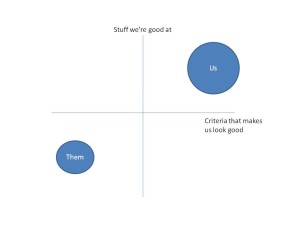Why my Digital Health startup wouldn’t exist if I hadn’t been an avid writer (and why I’m writing again)
The last time I wrote here was May 2016. Since then, I’ve been laser focused on building my Digital Health company SeamlessMD.
The crazy thing is that without writing, SeamlessMD wouldn’t exist.
How could that possibly be the case?
In December 2012, we pitched the venture idea for what eventually became SeamlessMD at The Next 36 incubator. Just 24 hours earlier, I met my co-founders Willie and Phil for the very first time.
The selection process for The Next 36 itself was intense – you applied online, completed an asynchronous video interview, and then 72 finalists got flown to Toronto for a series of interviews by quite an esteemed group. One moment you were being interviewed by the previous CEO of Goldman Sachs Canada, and the next you were being grilled by Rotman’s top professor on entrepreneurship.
The 72 were narrowed to 36 (hence “The Next 36”), thrown into 12 teams of three (and yes, we were all strangers to each other) and given 24 hours to come up with a venture idea to pitch.
I can’t remember how many ideas Willie, Phil and I went through, but I eventually brought up the hospital readmissions problem I had done research on during medical school. From there, we decided to pitch a remote monitoring platform to prevent readmissions. The fact that SeamlessMD is still in the same overall problem space today is a pretty incredible, low probability event.
After throwing our first pitch deck together and very little sleep, we got up on stage and made that very first pitch to a crowd of entrepreneurs, executives and investors. The crowd voted on the venture most likely to succeed, and somehow we ended up on top!
While wrapping up Day 1 of being a company, one of The Next 36 co-founders shared more about the selection process:
“There was actually a huge debate about whether Josh should make the 36. What saved you was that incredible blog you created, where you not only wrote hundreds of articles, but had tons of students commenting on it. That’s what made us believe you could build something special.”
What he was referring to was another blog I started in my last year of undergrad. What was initially meant to be a personal blog to chronicle my journey into medical school, turned into a full-blown advice website for high school and undergrad students. My university went on strike for three months, so I used my free time to start write almost every other day, and it organically snowballed into a very popular resource. I have always enjoyed writing, but it was that first blog that really honed my writing skills and made me love it.
It’s humbling to realize that I very well may not be building SeamlessMD today if I hadn’t spent years writing and building that first blog. When I reflect on that, it reminds me of how beautiful the written word is, and why I love it so much.
While I’ve missed writing for five and a half years, I’ve also been lucky to learn so much while building SeamlessMD.
I have many thoughts and learnings to share, particularly on Digital Health and Entrepreneurship. I hope to be right sometimes and expect to be wrong sometimes as well. Most of all, I believe sharing these thoughts will help move the industry forward, and I look forward to thinking out loud with all of you once again.


